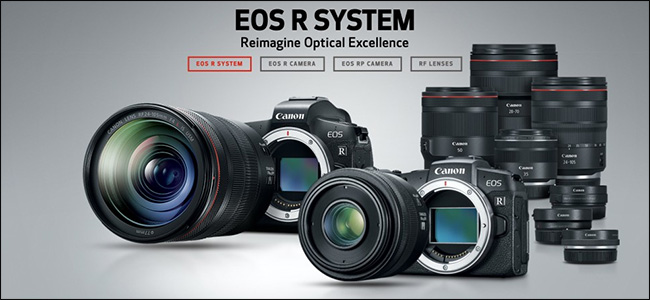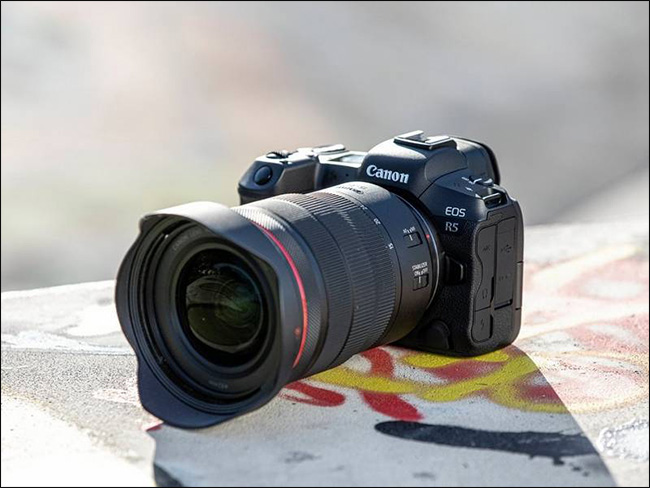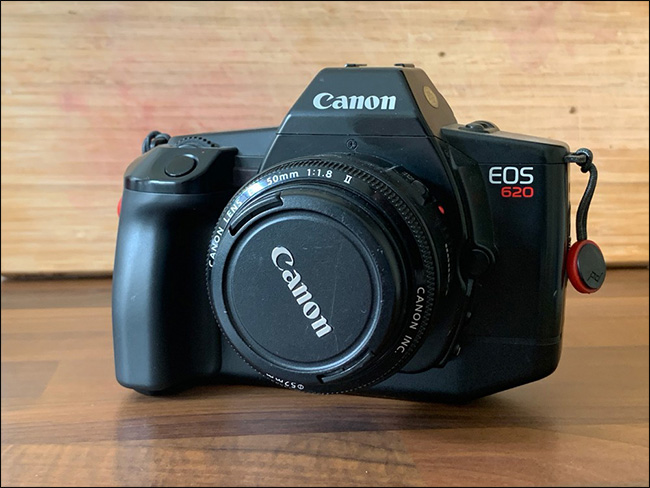
Why Aren’t Mirrorless Cameras Smaller?

The mirrorless camera was originally heralded as the smaller, lighter, more convenient alternative to the DSLR. However, if you look at the latest mirrorless cameras from Canon, Nikon, and (to a lesser extent) Sony, that hasn’t really played out. Let’s look at why.
Canon’s new flagship mirrorless camera, the EOS R5, weighs just shy of 26 ounces and measures 5.43 x 3.84 x 3.46 inches. The company’s closest equivalent DSLR, the 5D Mark IV, weighs 31.4 ounces and measures 5.94 x 4.57 x 2.99 inches. While there’s definitely a difference and the R5 is lighter and smaller (in most dimensions), it’s not exactly night and day. Then, of course, you also have to add a lens.

If you put an RF 24-105mm f/4 L IS USM lens (24.5 ounces) on the R5, and an EF 24-105mm f/4 L IS II lens (28.1 ounces) on the 5D, their total weights increase to 50.4 and 59.5 ounces, respectively. You’ll feel the difference if you hold both of them simultaneously. However, neither is a particularly light setup—in fact, they’re pretty similar.
But, here’s the real kicker: the RF 24-105 and EF 24-105 are similarly sized and performing lenses. One of the biggest advantages of mirrorless cameras is they use brand-new lens mounts, so manufacturers can make even better lenses.
The mirrorless replacement for the incredibly popular EF 24-70 f/2.8 L II USM lens (28.4 ounces) is the RF 28-70 f/2.0 L USM, which weighs an utterly ridiculous 50.4 ounces. Put that on an R5, and the total weight is 4.75 pounds compared to 3.74 pounds of the 5D and its 24-70mm lens. Now, the mirrorless camera rig weighs more!
How did we end up here?
Canon and Nikon’s Manufacturing Decisions
The biggest reason mirrorless cameras aren’t smaller and lighter is simple: Canon and Nikon didn’t want them to be. We’ll get deeper into why a bit later, but first, a brief history lesson.
Canon and Nikon’s DSLR platforms are, in technological terms, ancient. Canon launched the EF-mount in 1987 while the first Nikon F-mount lenses were released in 1959. That’s basically prehistory.

While Canon and Nikon have gotten good use out of their lens platforms, they’ve now hit hard, physical limits with how much further they can push them. Canon probably would have loved to release that monster RF 28-70 f/2 we mentioned above for its DSLRs.
However, due to the design of the lens mount, the company couldn’t manufacture an equivalent lens. Canon has been limited to a 24-70mm f/2.8 for decades.
When it was time to design a new lens mount for their flagship mirrorless cameras, Canon and Nikon simply didn’t choose to go smaller—they went bigger. By removing the mirror, they were able to reduce the distance between the lens and the sensor, which improves image quality. Widening the mount made it possible to make lenses with wider apertures.
They now have more options to innovate, which means bigger, crazier lenses.
In theory, Canon and Nikon (and, before them, Sony) could have designed smaller lens mounts, but that would have constrained them further.
This brings us to the next reason why mirrorless cameras are still so large.
The Size of Lenses
While cameras get a lot of attention, it’s the lenses that do most of the hard work in photography. A major problem for manufacturers looking to make things smaller are the laws of physics.
A full-frame camera sensor is standardized from a piece of 35mm film. They’re 36 x 24mm and that can’t really be changed. Sure, there are smaller image sensors, like those used in smartphones and APS-C cameras, but they come with a whole host of trade-offs.
The high-end amateur and professional photography industries are built around the 35mm standard, and that includes the lenses.
The relationship between the focal length of a lens and the size of the sensor affects how things appear. On a full-frame camera, wide-angle lenses have focal lengths of less than around 40mm, while telephoto lenses have a focal length of longer than about 70mm. In the middle are the normal lenses, which provide a perspective similar to that of the human eye.
Focal length, however, is a physical property of a lens. A lens with a focal length of 100mm doesn’t strictly need to be 100mm long, but it’s going to be in that ballpark.

As long as camera manufacturers are committed to making a full-frame camera, they’re also committed to lenses being a certain (fairly hefty) size. There are small savings that can be made by using lighter materials or more compact designs. However, there’s no way for a 24-70mm zoom lens to be much smaller than it currently is and be any good.
Because the lenses have to be a certain size, cameras do, as well. That’s why Canon’s lightest full-frame mirrorless camera, the RP, is still 17.1 ounces—roughly 2/3 the weight of the flagship R5.
Even the cheaper, lighter cameras still have to work with the same lenses.
The Decline of the Consumer Camera Market
So far, we’ve focused on the high-end of the camera market because that’s the part that offers the most hope for manufacturers.
Since 2010, worldwide digital camera sales have dropped 87 percent, from 121.5 million to 15.2 million. Smartphones have stolen the low-end, consumer-focused camera business.
Since almost everyone who wants a small, light, easy-to-carry camera already has one in their pocket, there’s not a lot of incentive for manufacturers to develop a competing product.
Mirrors Were Never That Large
One part of the discussion about camera size and weight that gets a little lost is that the mirrors in DSLRs were never that big in the first place. They take up some space (which is why mirrorless cameras have slightly smaller dimensions), but they were never particularly heavy. The sensor, electronics, battery, LCD screen, viewfinder, SD card slot, lens mount, and so on, are all still there.
Plus, as we covered earlier, the little bit of size and weight that was saved, manufacturers used for more advanced lens mounts. It’s the same reason removing headphone jacks from phones hasn’t led to smaller, lighter phones, but rather, more advanced phones.
Are There Any Small Mirrorless Cameras?
If you really want a small, light, mirrorless camera, you’re in luck! They do exist, they’re just not flagship products for most brands. This is because the compromises required to make them don’t lend themselves to great spec sheets.
Canon, for example, has the EOS M line of mirrorless APS-C cameras. Sony’s Alpha line includes plenty of APS-C models, too. Unfortunately, as these use the same lens mount as the full-frame cameras, most of the lenses are still pretty big.
However, Leica’s M line of mirrorless rangefinders are about as compact as a full-frame camera can get.







Leave a reply